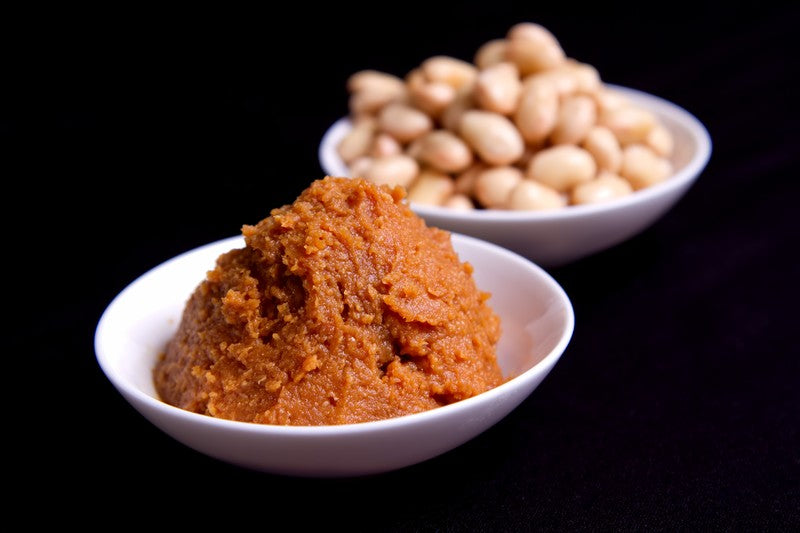Let's enjoy miso more ~Classification of miso~

Hello, this is Yukimi from MISOVATION staff.
My recent boom is eating summer vegetables picked in the garden with miso dip. Cucumbers, eggplants, and tomatoes are especially popular, but personally, raw bitter gourd goes well with sake! !
Making miso dip is very easy. Just mix 1 tablespoon of your favorite miso, 1 teaspoon of sugar, and a little water and you're done.
In addition, you can enjoy variations by mixing familiar ingredients such as mayonnaise, shichimi, honey, and aojiso. It's perfect as a snack, and it's also recommended as a countermeasure against summer fatigue.
This time, I will introduce the classification of miso. Even if you say miso in one bite, the miso used by each hometown and family is completely different. By knowing the classification and characteristics of miso, please enjoy using miso according to your cooking and mood.
|
table of contents |
Three Points to Classify Miso
Food products are often set under the Japanese Agricultural Standards (JAS), but because there are so many types of miso it is difficult to categorize to establish standards, there is no clear standard for miso. There is no food.
However, the wide variety of miso can be broadly categorized into the types of koji, differences in taste (sweet/spicy), and differences in color.
・Koji type
The basic ingredients of miso are “soybean” + “malted rice” + “salt”. Of these, according to the type of koji, which is essential for decomposing soybeans and promoting fermentation, they are classified into “rice miso,” “bean miso,” “barley miso,” and “mixed miso.”
"Rice miso" is made all over Japan using "rice koji" made from white rice and brown rice. It is a major miso with the highest shipping volume, with various formulations and aging periods depending on the region.
``Mame miso'' is a miso made using ``mame koji'' made from soybeans, and it is also used in miso katsu and miso nikomi udon, a specialty of Nagoya.
“Miso” is a miso made using “barley koji” made from barley and naked barley. People from the Kyushu region may be familiar with it.
"Awase Miso" This miso is a combination of several types of miso introduced above, and is eaten all over the country. Awase miso called “red dashi” contains soybean miso.
・Difference in taste (sweet/spicy)
General miso products are mainly classified into three types: “sweet miso”, “sweet miso” and “spicy miso”. If the amount of salt is too much, it will be "dry", and if the amount of koji is too much, it will be "sweet".
"Amami Miso" Salt concentration is about 5-7%. There are “white miso” that can be eaten in the Kansai region and “Edo sweet miso” that is traditional in Tokyo. In the Kansai region, there is a culture of eating zoni made with white miso on New Year's.
"Sweet Miso" Salt concentration is about 7-11%. Most miso on the market is classified as sweet miso. There is a wide range of sweets, from literally sweet to sweet and salty.
"Spicy miso" salt concentration is about 11-13%. It is the most salty and has a clean taste, and was once the mainstream miso. Today, it is mainly produced in the northern regions.
Recently, there is a tendency to prefer sweet miso that uses a lot of koji, but sweet miso is just the right amount to dip into ingredients and eat as it is, while dry miso has a high salt concentration and is easy to decide the taste, so it is suitable for cooking. It's delicious when you use it.
・Color difference
It is easy to see that they are classified by color. The color of miso is classified into ``white'', ``light color'' and ``red''. This color varies depending on various conditions such as the variety of soybeans used as raw materials, the difference in the heating method of boiling or steaming the soybeans, the amount of koji, the temperature control during the fermentation and aging process, and whether or not to mix in the middle. However, basically, if the aging period is short, it will turn white, and as it ages, it will turn pale and red, and if it is aged for a long time, it will turn black.
"White miso" maturation period about 1 month. White miso, which has a strong sweetness, is common, but there are also products with a high salt content.
"Light color miso" maturation period is about 4-8 months. It is a bright yellow miso that is distributed nationwide. It's a recent mainstream, and it's almost always displayed in the supermarket.
"Red miso" matured for 1 year or more. It is characterized by its dark color, and some of them are close to black. It is classified into rice miso, barley miso, and soybean miso, which are aged for a long time.
By the way, dark-colored miso tends to be thought to have a strong taste and high salt content, but dark color does not mean high salt concentration. When choosing miso, pay attention not only to its appearance, but also to the amount of salt on the ingredients list.
MISOVATION's Commitment to Miso
At MISOVATION, we partner with miso breweries all over Japan on a monthly basis and use carefully selected miso that uses traditional methods such as "natural brewing", "wooden barrel brewing", and "non-heating method".
"Natural brewing" is an old-fashioned manufacturing method that ferments and matures according to the natural climate and temperature, not fermentation with industrial temperature control. It is characterized by umami and flavor that can only be produced by natural brewing.
"Wood barrel brewing" A traditional method of brewing in large wooden barrels. The wooden barrels are easy for the bacteria in the brewery to live in, and the temperature changes that determine the flavor of fermented foods are gently transferred to the miso in the barrels even if the temperature rises or falls, resulting in a mellow flavor. On the other hand, in recent years, the number of cases where mass-produced and hard-to-break plastic tubs are used is increasing. In addition, the number of craftsmen who repair wooden barrels is decreasing year by year due to the aging of the population, and the number of manufacturing manufacturers is decreasing accordingly, so warehouses that make miso in wooden barrels are becoming rare.
"Non-heated manufacturing method" As the name suggests, miso is dug out from miso buckets without heat sterilization, and is made into a product while the bacteria are still alive. Miso lined up in supermarkets is usually heat sterilized. This is because if this process is not followed, fermentation will progress and the miso will turn black when displayed at supermarkets, and the quality of the miso will not be uniform. However, miso is also something that you can enjoy the change in flavor and aroma because the fermented bacteria are alive.
MISOVATION uses miso that has been produced by miso breweries around the world using traditional methods. These types of miso are not available in general major supermarkets, and are basically sold only at the head office store where the miso storehouse is located, or in local supermarkets and restaurants, making it difficult to order and distribute. Special miso. Please look forward to encounters with specialty miso from all over Japan.
As for the miso, please look forward to the "MISOTIMES" that we will send you when you receive the product, which introduces a lot of the manufacturer's commitment.
References
・"Miso Encyclopedia" Atsumitsu Watanabe (Tokyodo Publishing Co., Ltd.)
・ “Miraculous fermented seasoning miso textbook” Misaki Iwaki (X-Knowledge)
・About wooden barrel preparation | Echizen organic miso storehouse Marukawa miso (marukawamiso.com)

